License to Study
Feathers are a suppressed topic in online forums and
the birding community in general. The possession of
feathers and other parts of native North American
birds without a permit is prohibited by the Migratory
Bird Treaty Act (MBTA 1918). There is no exemption
for molted feathers or those taken from road or
window-killed birds. As a result, the law puts a
damper on curiosity and discovery. However, there is a
solution for the determined citizen scientist.
The state issues a Scientific Activity License that
allows for the possession of bird parts for a fee for one
calendar year. The caveat is a study has to be a basis for
the possession and a report is due the state annually.

Fig. 1, Scientific Activity License
Feathers 101: Parts of a Feather
Before embarking on a feather study, a basic
understanding of feather morphology and function are
needed. Where better to start than a chicken (gallus
gallus domestic). It doesn’t require a permit, has the
majority of feather types, and free if you have a nice
neighbor that has egg laying hens. Let’s become a
plumologist!
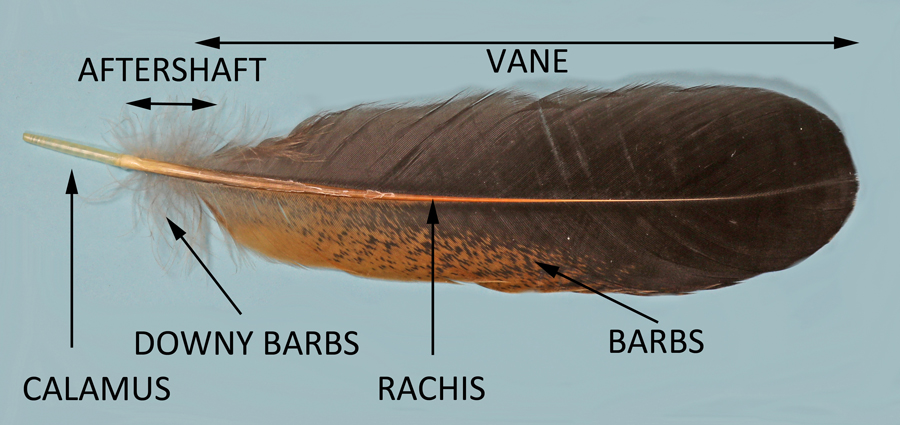
Fig. 2, parts of a feather
A chicken tail feather (Figure 2) displays the standard
parts of a bird feather. The calamus (shaft or quill) is
the base of the feather. It is hollow and without barbs.
Extending from the calamus is the rachis (scapus). The
base of the rachis is a section called the aftershaft that
has downy barbs. The rachis ends with a section called
the vane (or web) where barbs are attached at a 45° angle.
Barbs attached to the rachis come in three basic
structures – pennaceous, plumulaceous and filoplume
(discussed in the feather type section).
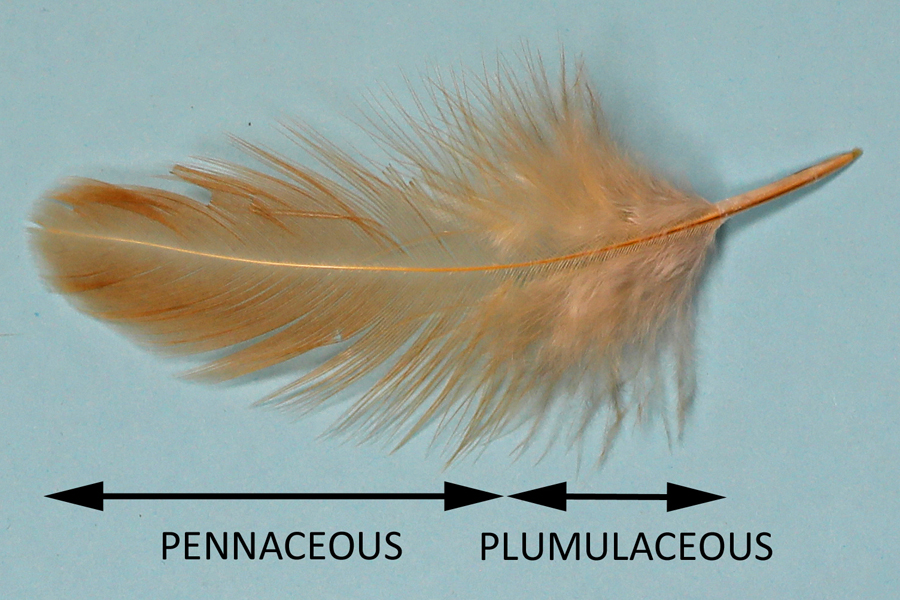
Fig 3, chicken contour feather
This chicken contour feather (Figure 3) shows two
types of feather structures. The pennaceous end is
characterized by sturdy, interlocking barbs whose
woven surface repels dirt and water and protects
against wind and sun. The plumulaceous end is loose
and chaotic, which can trap air to insulate the body.
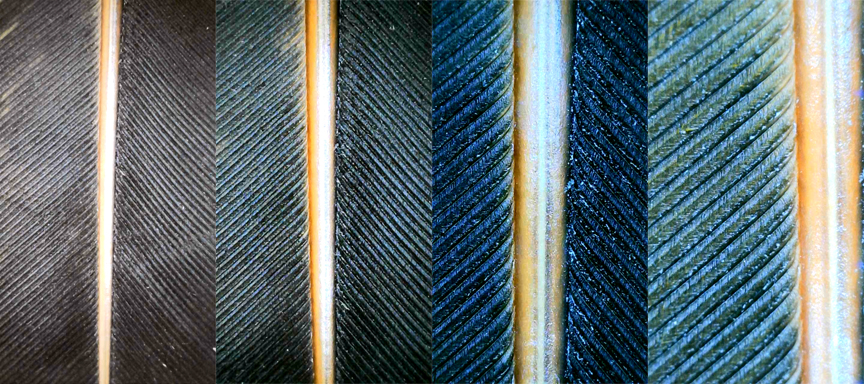
Fig. 4, barbs attached to rachis
Figure 4 shows the barbs of a chicken tail feather
attached to the rachis with increasing magnification –
well structured, very tight and sturdy.
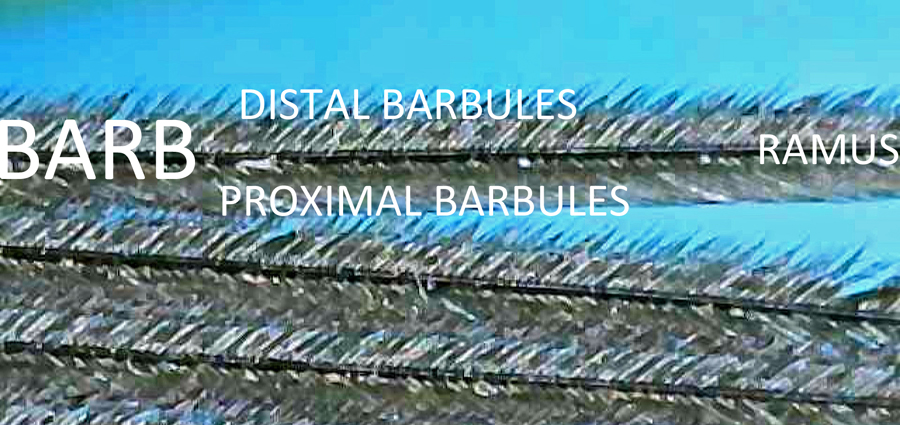
Fig. 5, barbules
Figure 5 shows a primary feather barb microstructure
close-up. Each stiff barb has a central ramus where
barbules are attached at a 45° angle. Note the texture
difference between the distal and proximal barbules.
The proximal and distal sides of adjoining barbs
overlap at 90°. Pennaceous barbules have hooklets
(barbicels or hamuli) that act like Velcro (cocklebur
origin) to interlock barbs and stiffen the feather

Fig. 6, pennaceous plumulaceous
for flight (figure 6, left image). There are always
exceptions as in the case of cormorants whose feathers
absorb water to help them dive and are why you often
see their wings outstretched while sunning. Preening
reconnects separated barbs.
Plumulaceous barbs look in disarray as they don’t
have hooklets to hold them together (Figure 6 right
image). The barbs turn fluffy close to the rachis and
end in a flexible ramus with longer and wider spaced
barbules.This arrangement allows air to be trapped for
insulation.
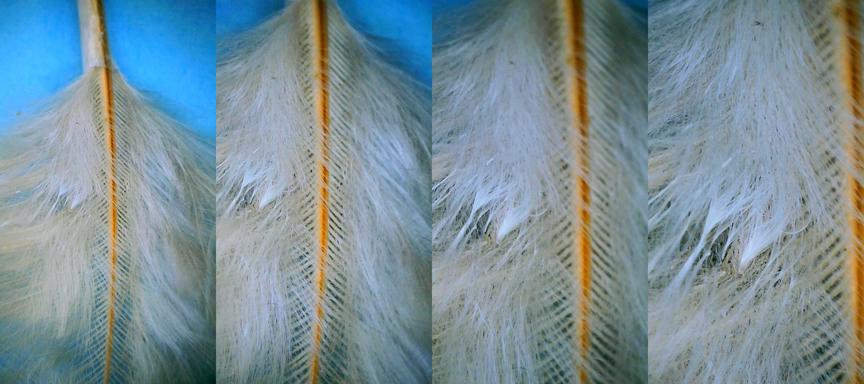
Fig. 7, plumulaceous
Figure 7 shows various magnifications of the
aftershaft of a contour feather. Contour feathers are
what cover the body and wings.
Feather Facts
Feathers are made of keratin, the same material that
makes up fingernails, hoofs, claws, hair, scales, beaks
and talons.
Feather follicles are connected to each other by several
muscles, notably by the smooth apterial muscle
(counteracting horizontal movements of feathers), the
smooth erector muscle (which lifts the feather up)

Fig. 8, BROC RCKI
(Figure 8) and the depressor muscle (which pulls the
feather down and counteracts the vertical rotation of
feathers induced by airflows).(1)
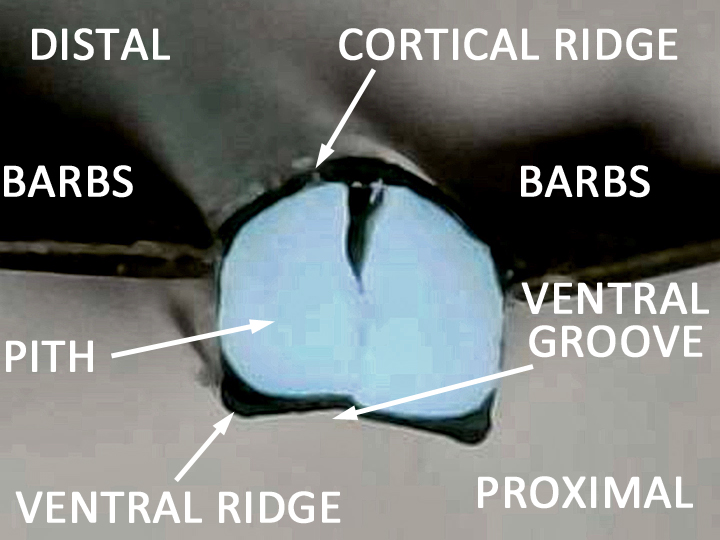
Fig. 9, rachis cross section
The cross section of a tail feather rachis changes from
circular at the calamus end to rectangular towards the
distal end. The ventral groove and ridges were found
on the flight, tail, and contour feathers of the chicken.
The void seen in Figure 9 is natural. The pith is a stiff
foam-like material.
Feathers do not have nerve endings. Herbst corpuscles
are pressure sensitive and the most widely distributed
mechanoreceptors in birds. They are present at feather
follicles and many other parts of the body. They
resemble the Pacinian corpuscles of mammals and
detect rapid mechanical deformation (vibration). Not
every follicle has a corpuscle(2). These corpuscles signal
any movement in the feather.
Unlike human hair follicles, which are randomly
distributed, feather follicles are arranged in a precise
pattern so that feathers properly overlap. Follicles
grow in patches called pterylae. There are parts of a
bird that do not have follicles, but those bare spots are
covered by their surrounding pterylae. On occasion a
malformation of the follicle occurs resulting in two or
more feathers being grown. This condition is called
polyfolliculosis.(3) Figure 10 shows two calami fused at
the base and from a single follicle.
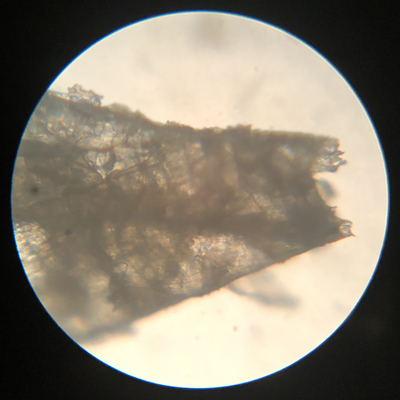
Fig. 10, two feathers for one follicle
The preening (uropygial) gland produces oil used by
birds to condition their feathers. This gland is on the
bird’s back just above the base of the tail. The bird
rubs its beak across the gland, picking up the oil. It
then applies it all over (Figure 11). The oil is like a hair
conditioner that keeps the feathers healthy and aids in
repelling water.
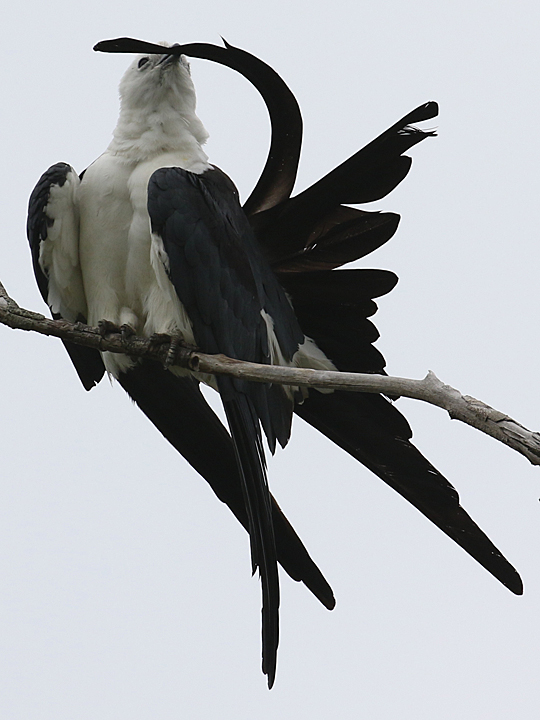
Fig. 11, swallow-tailed kite preening
The Barn Owl in Figure 12 has a facial ruff made
up of stiff auricular feathers, the same type shown on
the Inca Dove.
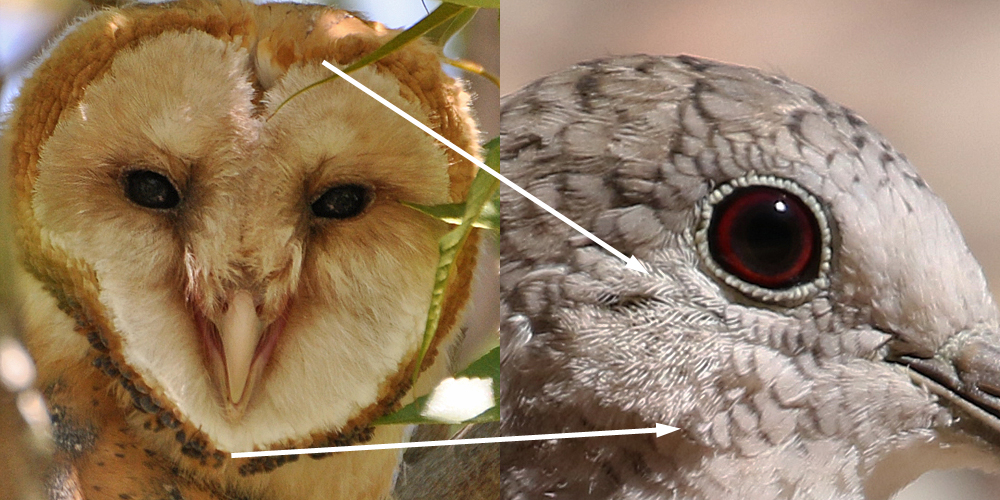
Fig. 12, BANO INDO
Sonations are sounds produced by feathers. Some
male hummingbirds, like Anna’s, use auditory displays
as part of their mating ritual. The male hovers about
50 feet above the nest and then dives. At the last
moment, it pulls out of the dive causing a whistle
sound made by the tail feathers.
References
(1)Delaunay, Mariane G. (2020) Anatomy of avian rictal
bristles in Caprimulgiformes reveals reduced tactile
function in open-habitat, partially diurnal foraging
species. Journal of Anatomy, 237:355–366 .
(2)Van den Broeck, Martine. (2023) Histology of Birds.
Ghent University “http://www.histology-of-birds.
com/ galleries.php?id=74”
(3)Rich, Gregory, DVM. (2023) Polyfolliculosis in
Birds. VCA Animal Hospitals “https://vcahospitals.
com/know-your-pet/ polyfolliculosis-in-birds”
blank
blank
blank
